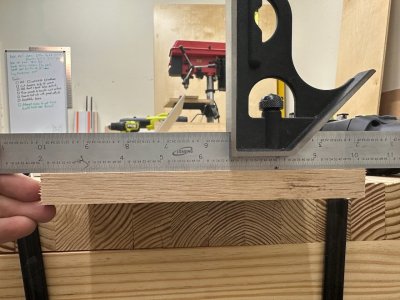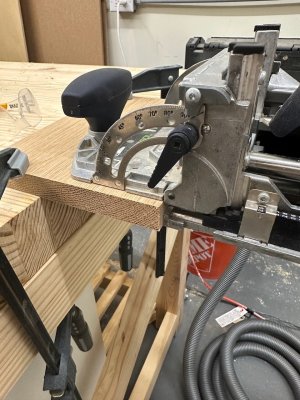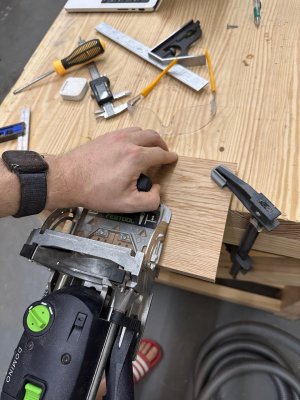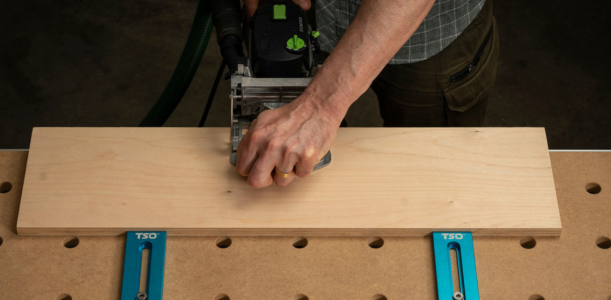I’m having consistent problems with my DF500 and vertical alignment. This results in panels that have considerable ridges between boards. This has been an issue ever since I got this tool (about a year ago).
For this test, I made 4 mortises in 19.9mm thick material using the 5mm cutter. Cut depth was set at 12mm. The fence height was set to 20mm. As a result, the distance from the top reference surface to the top edge of the mortise should be 7.50mm.
When I used callipers to measure my actual results, I got 7.50mm, 7.30mm, 7.70mm, 7.46mm. That’s a variability of .4mm (or about 16 thou). Is this normal but I’m just expecting too much of the machine?
When I make panels & use the domino for alignment, I typically have to do a LOT of sanding along the joints between boards with 80 grit.
I had the workpiece clamped down, overhanging my workbench to ensure that the fence was being used as the reference, rather than my work surface. My technique is to push kinda “down and forward” on the fence handle. I then grab the tool by the power connector and slowly push directly in.
The workpiece was freshly milled & verified with a known-good square & straight edge & I was using dust collection. I've attached 4 photos showing the setup, and how I hold the tool.
My fence isn’t drifting (have verified /w callipers at the beginning and end of this trial, and only 4 mortises were drilled, hardly a marathon session!).
What else could I be doing wrong here?
For this test, I made 4 mortises in 19.9mm thick material using the 5mm cutter. Cut depth was set at 12mm. The fence height was set to 20mm. As a result, the distance from the top reference surface to the top edge of the mortise should be 7.50mm.
When I used callipers to measure my actual results, I got 7.50mm, 7.30mm, 7.70mm, 7.46mm. That’s a variability of .4mm (or about 16 thou). Is this normal but I’m just expecting too much of the machine?
When I make panels & use the domino for alignment, I typically have to do a LOT of sanding along the joints between boards with 80 grit.
I had the workpiece clamped down, overhanging my workbench to ensure that the fence was being used as the reference, rather than my work surface. My technique is to push kinda “down and forward” on the fence handle. I then grab the tool by the power connector and slowly push directly in.
The workpiece was freshly milled & verified with a known-good square & straight edge & I was using dust collection. I've attached 4 photos showing the setup, and how I hold the tool.
My fence isn’t drifting (have verified /w callipers at the beginning and end of this trial, and only 4 mortises were drilled, hardly a marathon session!).
What else could I be doing wrong here?





